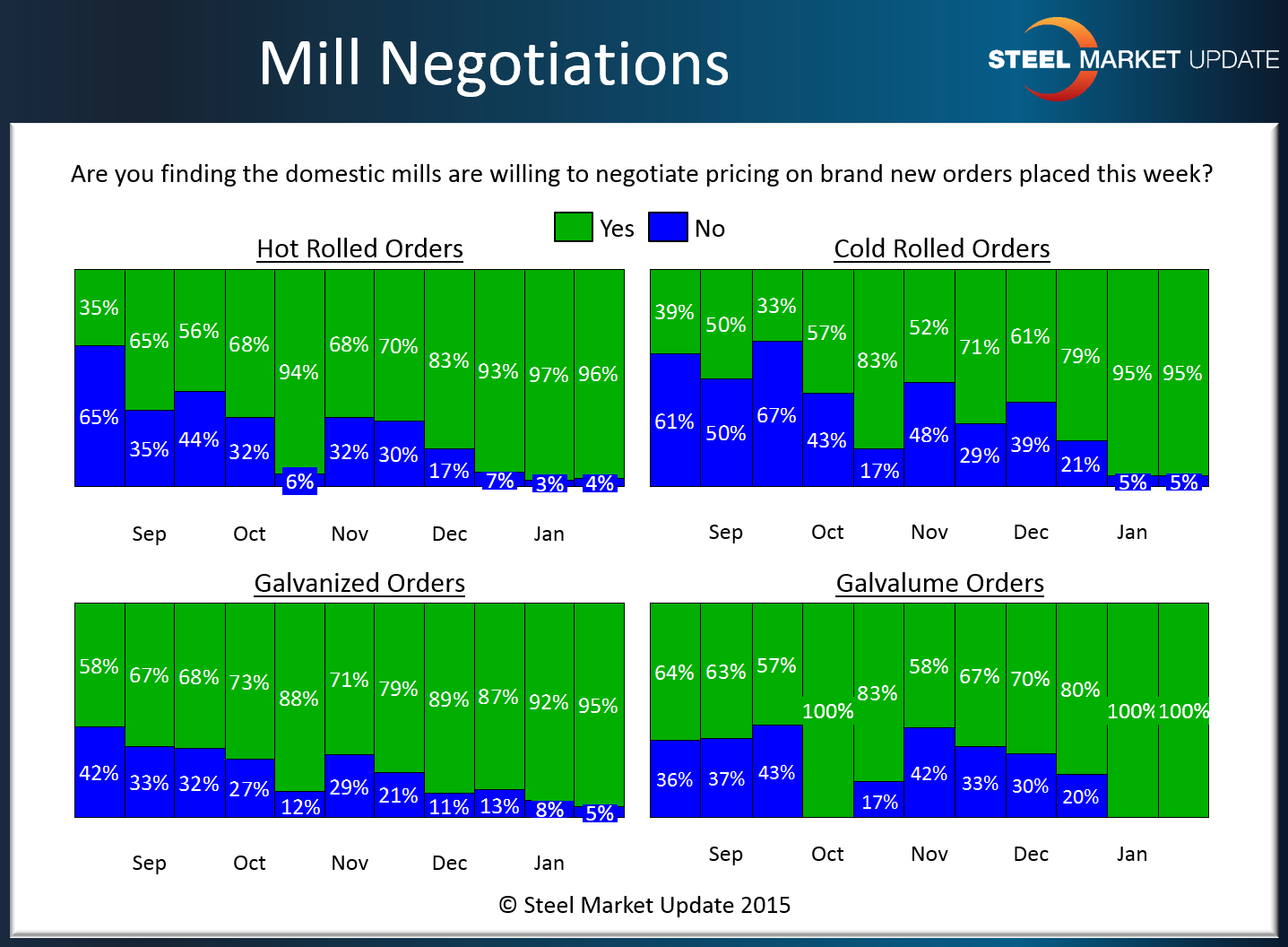SMU Data and Models

Steel Mill Negotiations: Make Us an Offer…
Written by John Packard
January 22, 2015
According to the respondents to this week’s flat rolled steel market survey, the domestic steel mills are willing to negotiate prices on new orders for all flat rolled steel products.
As you can see by the graphic below, ever since the beginning of the 4th Quarter 2014 the domestic steel mills have been willing to discuss base price levels with their customers on hot rolled, cold rolled, galvanized and Galvalume steels. One of the main reasons for the mill position is the short lead times they have on all products (see lead time article in this issue of SMU). The more limited the mill order books the more anxious they are to fill them.
Our survey results are showing the response percentage indicating the mills as willing to negotiate pricing has been increasing since the beginning of December and are almost at 100 percent levels on all products in both the early January and this week’s survey results.

John Packard
Read more from John PackardLatest in SMU Data and Models

SMU Scrap Survey: Sentiment Indices rise
Both current and future scrap sentiment jumped this month, though survey participants reported responses before key trade news was announced.

SMU Survey: Sentiment splits, buyers have better view of future than the present
SMU’s Steel Buyers’ Sentiment Indices moved in opposite directions this week. After rebounding from a near five-year low in late June, Current Sentiment slipped again. At the same time, Future Sentiment climbed to a four-month high. Both indices continue to show optimism among buyers about their company’s chances for success, but suggest there is less confidence in that optimism than earlier in the year.

SMU scrap market survey results now available
SMU’s ferrous scrap market survey results are now available on our website to all premium members. After logging in at steelmarketupdate.com, visit the pricing and analysis tab and look under the “survey results” section for “ferrous scrap survey” results. Past scrap survey results are also available under that selection. If you need help accessing the survey results […]

SMU flat-rolled market survey results now available
SMU’s latest steel buyers market survey results are now available on our website to all premium members. After logging in at steelmarketupdate.com, visit the pricing and analysis tab and look under the “survey results” section for “latest survey results.” Past survey results are also available under that selection. If you need help accessing the survey results, or if […]

SMU Survey: Sheet lead times stabilize, plate contracts
Mill lead times for sheet products were steady to slightly longer this week compared to our late June market check, while plate lead times contracted, according to steel buyers responding to this week’s market survey.

